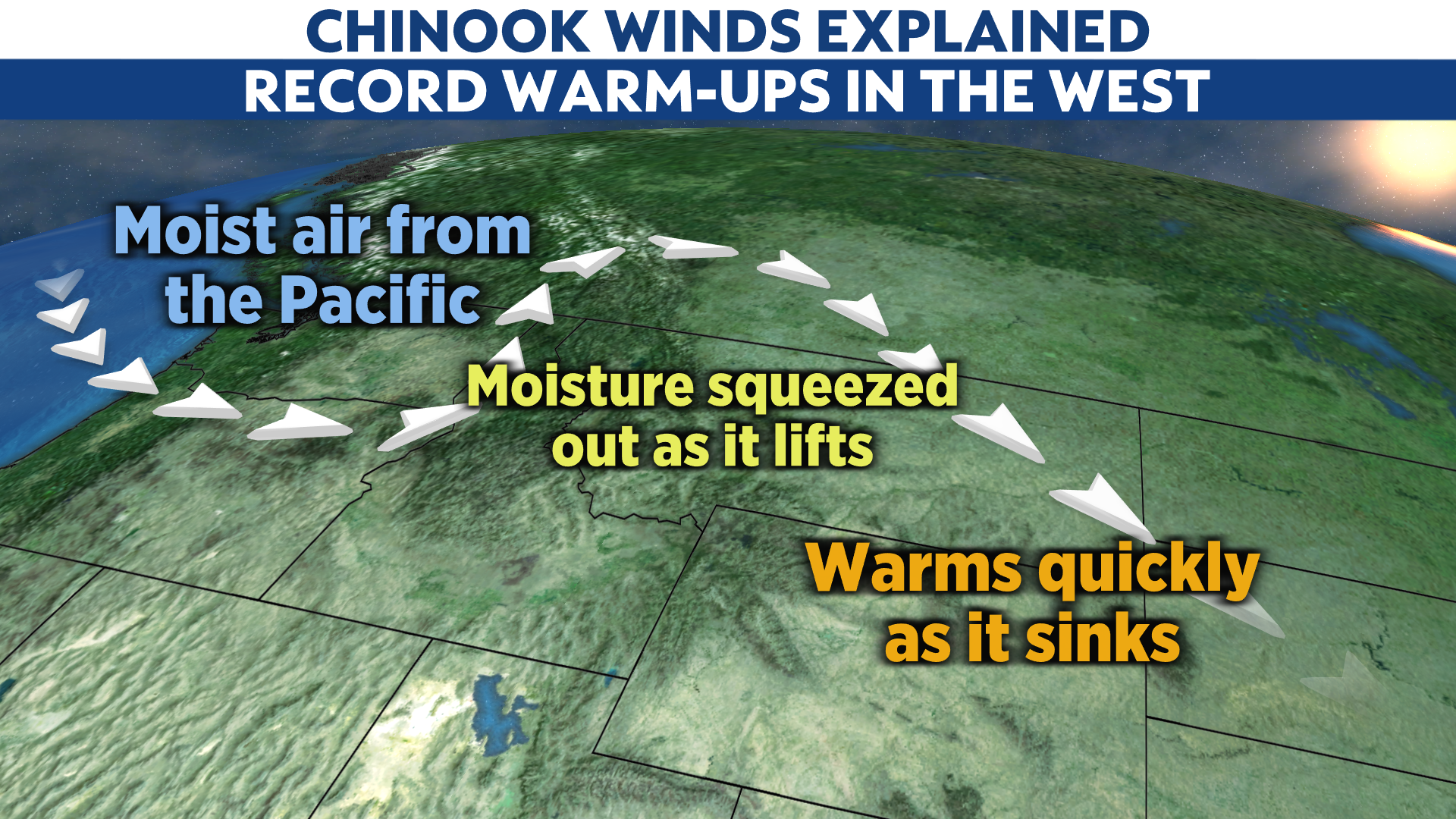We all know weather can change quickly across North Carolina, especially in the winter. But can you imagine temperatures swinging 100 degrees in 24 hours? Or how about a 50-degree change in two minutes?
First, let’s give you the details of these historic temperature swings.
The first occurred on January 22, 1943 in Spearfish, South Dakota, a town in the Black Hills region of the state.
The morning temperature started off at -4 degrees at 7:30 a.m. Soon after, a strong westerly wind began blowing, and all of a sudden, the temperature rose to 45 degrees, a temperature change of almost 50 degrees!
It got so warm, so fast that car and house windows began to fog up and crack. This was the quickest temperature change of this magnitude on record, and the record still stands.
The second notable temperature change occurred in Loma, Montana on January 14-15, 1972, over a 24-hour span. The culprit was again a westerly wind that was a little more gradual in its impacts. However it still set a world record that remains today.
The morning temperature on the 14th read -54 degrees. On the morning of the 15th, the temperature had jumped 103 degrees, up to 49 degrees!
The Native American tribes in the western states had a name for this type of event. They called it a snow-eater wind. The term “Chinook wind” was derived from the Chinook people who lived along the Pacific Ocean and routinely saw a warm west wind move across the Pacific Northwest that could drastically change the temperature.
No matter what it’s called, the mechanism is the same. Moisture-rich air originating from the Pacific Northwest is transported east and upwards, over the Rocky Mountains, in a process called orographic lifting. This essentially squeezes all the moisture out of the air.
As the now-dry air travels back down the mountain, it warms up very quickly through a process called adiabatic warming. If conditions are just right, including the strength of the wind speed and long duration of the wind, this can lead to the dramatic and historic temperature swings like the ones noted above.

Another example of how much these winds can play with the temperature in a given location is what happened in Spearfish once the wind stopped blowing.
By around 9:30 a.m., about an hour and a half after that record-setting temperature jump in 1943, the winds relaxed and once again the temperature dropped to the pre-Chinook readings below zero. How crazy our weather can be.





